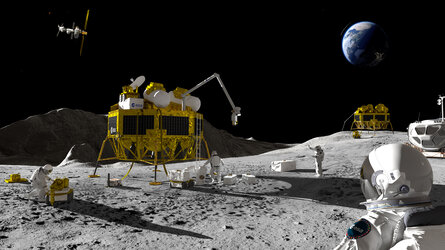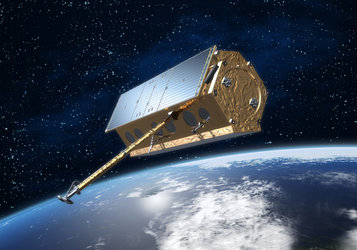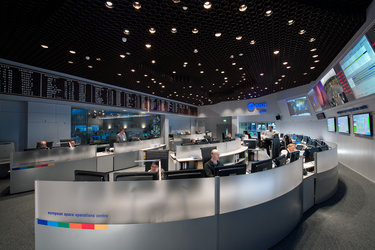Europe teams up for next-gen mission control software
Together with national space agencies and industry, ESA is working to develop next-generation software for spacecraft control and monitoring. The initiative is a strategic and technological jump, and will see most space organisations in Europe adopting a common infrastructure, which will improve efficiency, lower technical risk and deliver a major boost to European industrial competitiveness.
In a 'first' for ground systems engineering, space agencies, spacecraft operators and manufacturers in Europe have agreed to adopt a common software infrastructure to control satellites during all phases of their missions, including pre-launch testing.
Development of the European Ground Systems – Common Core (EGS-CC) software platform is being done through an innovative collaboration involving ESA, European industry and national space agencies.
Once in service, the new software platform – comprising control applications, monitoring tools and databases – will enable electrical ground support equipment (EGSE) and mission control systems to be built. EGSE are used for the functional verification of a spacecraft during development, while the mission control system enables ground controllers to issue commands to satellites and receive on-board health status and scientific data once in orbit.
The new software platform is expected to be used in most European institutional and commercial space programmes.
New approach brings enhanced benefits
"This initiative represents a new approach to sharing and exploiting software products," said ESA's Juan Miro, Head of Ground Systems Engineering at the Agency’s European Space Operations Centre, Darmstadt, Germany.
"All of us in Europe who need and use such software will benefit from lowered costs and reduced risks, while European industry will enjoy a significant boost in developing their products and services for the global space market."

On 22 June, ESA signed a contract with Telespazio Vega as prime contractor to develop the new platform through to final delivery set for 2017. Telespazio Vega is leading a consortium of 20 companies in Germany, Belgium, Spain, Italy, Czech Republic, France, UK, Romania, Austria and the Netherlands.
The contract was signed by ESA Director General Jean-Jacques Dordain and Sigmar Keller, CEO of Telespazio Vega, in front of Franco Ongaro, ESA Director of Technical and Quality Management, and Thomas Reiter, ESA Director of Human Spaceflight and Operations. The signing took place at ESTEC, ESA's research and technology centre in the Netherlands.
The total value of this phase of development is €19.5 million.
Collaboration between major European space actors
A collaboration agreement on the EGS-CC was signed in 2014 by ESA, CNES, DLR, UKSA, Airbus Defence and Space, Thales Alenia Space and OHB System, setting the basis for the joint development and exploitation of the system. The Italian space agency ASI is in the process of joining this initiative.
At ESA, ground system software of this type is used extensively by the flight control teams at ESOC, where 14 spacecraft are currently in orbit and 14 new missions are under development.


Access the video
Through an ESA community software license, the source code will be available to any company in any ESA Member State, which can then further develop, extend, add new features and commercialise their own applications built using the ESA software. This approach has also been used in the past very successfully for ESA's SCOS-2000 mission control software.
Maintenance and evolution of the products is based on this established community model, under the governance of the stakeholders, reducing the cost of ownership for all participants.













 Germany
Germany
 Austria
Austria
 Belgium
Belgium
 Denmark
Denmark
 Spain
Spain
 Estonia
Estonia
 Finland
Finland
 France
France
 Greece
Greece
 Hungary
Hungary
 Ireland
Ireland
 Italy
Italy
 Luxembourg
Luxembourg
 Norway
Norway
 The Netherlands
The Netherlands
 Poland
Poland
 Portugal
Portugal
 Czechia
Czechia
 Romania
Romania
 United Kingdom
United Kingdom
 Slovenia
Slovenia
 Sweden
Sweden
 Switzerland
Switzerland
































